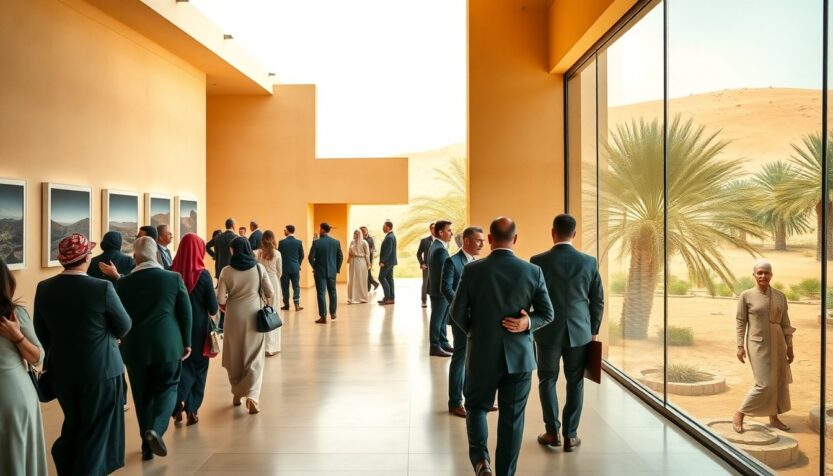This week, the Siwa Oasis in Egypt’s Western Desert became a site of artistic celebration with the official opening of the Peter Beard Museum. This private institution honors the acclaimed American photographer, who passed away earlier this year. Among the distinguished guests were royalty and notable artists, including King Frederik X of Denmark and Prince Muhammad Ali of Egypt, who gathered to recognize Beard’s significant contributions to photography and art.
The four-day opening featured a lavish cocktail event and a dinner illuminated by a full moon. The evening culminated in a candlelit unveiling of the museum at the Adrere Amellal Ecolodge, known for its sustainable design, constructed solely from local materials such as salt, clay, and palm. The ecolodge operates without electricity or plastic, relying on natural springs for water.
The vision behind the museum
Dr. Mounir Neamatalla, the architect behind both the hotel and the museum, has dedicated his career to promoting sustainable development and ecotourism in Africa and the Middle East. As the founder of Environmental Quality International (EQI), Neamatalla emphasizes the importance of preserving cultural heritage while fostering environmental consciousness. The museum, officially named Eye of the Desert: The Peter Beard Museum Siwa, embodies this commitment.
Siwa Oasis is historically significant and is believed to have been inhabited since the 10th millennium BC. It is famously linked to the Oracle of Amun, a site Alexander the Great visited in 331 BC. The remarkable ruins of this ancient temple continue to attract visitors eager to connect with Egypt’s rich past.
Peter Beard’s connection to Egypt
Peter Beard developed a deep appreciation for Egypt, a sentiment he shared with British painter Francis Bacon. For Beard, Egypt represented a crucial chapter in the broader narrative of African history. In his Egypt diaries, he expressed, “So much came into Egypt from the Land of Punt (Somalia) (also Sudan), you can see it in the art here.” His work captured the essence of this rich cultural tapestry, showcasing both the beauty of the landscape and the enduring wisdom of ancient traditions.
Wills Baker, a curator and senior advisor at the Peter Beard Studio, articulated this connection in his essay for the museum’s launch. He noted that for Beard, Egypt served as a conduit for ancient African knowledge, with evocative images of hieroglyphs, Luxor ruins, and mummified remains telling stories that transcend time. Beard’s artistry reveals a profound respect for the natural world, intertwining cultural memory with environmental integrity.
A lasting tribute to an extraordinary life
The museum itself is a manifestation of Beard’s legacy, constructed with the very mud of Siwa and operating independently from modern conveniences. Its collection features Beard’s iconic large-scale photographs, many adorned with hand-painted borders created by the Hog Ranch Art Department, a collective of Kenyan artists who were close to Beard. Various galleries showcase pages from Beard’s renowned diaries, which serve as a form of collage artwork, alongside personal family photographs that provide insight into his life.
Zara Beard, Peter’s daughter, highlighted in her contribution to the museum’s catalog that her father approached Egypt not with a mindset of conquest but as a humble observer. He found beauty in its rawest forms, viewing it as a moral imperative to capture fleeting moments of splendor. For Beard, the essence of beauty was intertwined with time, shaped by the forces of nature and human intention.
Embracing the future
The opening of the Peter Beard Museum stands as a testament to the belief that art and environmental responsibility can coexist harmoniously. The museum not only celebrates Beard’s extraordinary life and work but also serves as a reminder of the interconnectedness of beauty and the natural world. As stated in the museum’s inaugural announcement, it is a living tribute to Beard’s vision and enduring influence as one of the great artists of the 20th century.
In the words of Zara Beard, “This is not silence—It is the desert remembering.” This reflection encapsulates the essence of the museum, inviting visitors to witness the beauty of the desert and the rich legacy of Peter Beard.

